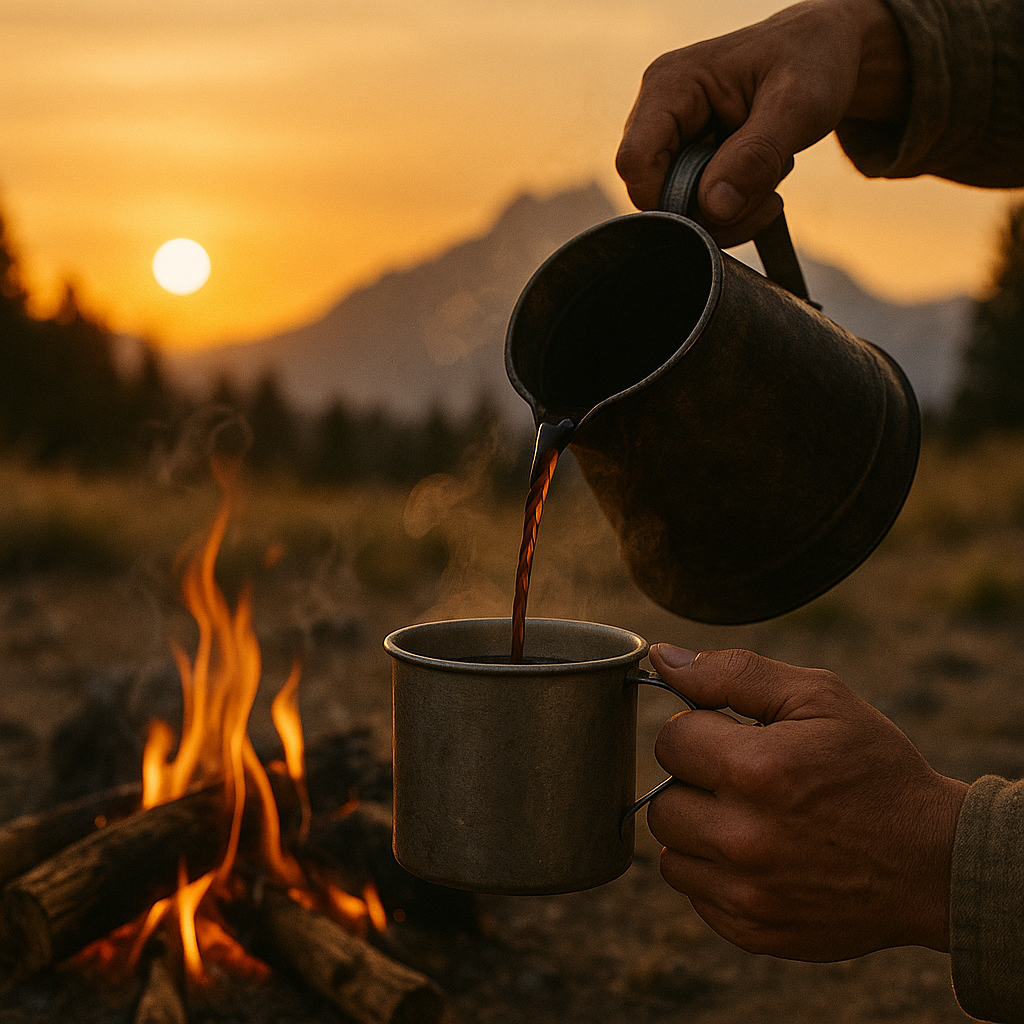Cowboy coffee recipe — if you’ve ever pictured yourself sipping a hot, bold cup of coffee by a campfire under a star-filled sky, you’re halfway to understanding the magic of Cowboy Coffee: Rustic Brewing Methods. This isn’t just coffee—it’s an experience that captures the simplicity and rugged charm of the old American West. No fancy machines, no digital timers—just you, water, coffee, and heat.
Cowboy coffee has endured for generations because it’s not only easy to make, but it also delivers a uniquely rich and robust flavor. While it may be rooted in campfire culture, it’s just as satisfying brewed on a stovetop at home. In fact, many coffee lovers are rediscovering it as a minimalist, back-to-basics alternative to modern brewing gadgets.
Whether you’re gearing up for a camping trip, want to master a heritage brewing style, or simply crave a strong cup with a hint of nostalgia, this guide will walk you through the history, technique, and secrets to making cowboy coffee taste as smooth as a professionally brewed pour-over.
A Brief History of Cowboy Coffee
Cowboy coffee traces its roots back to 19th-century cattle drives and frontier life, when cowhands needed a simple way to brew coffee in the wilderness. They didn’t have grinders or scales—just coffee beans, a pot, and an open fire. The result was a strong, unfiltered cup that kept them going during long days of work.
This rustic brewing method spread quickly across North America, becoming a staple for trappers, ranchers, miners, and outdoor adventurers. While modern brewing methods have taken over in cities, cowboy coffee remains a favorite among outdoor enthusiasts and traditionalists who appreciate its hearty taste and ritual.

What You Need for Cowboy Coffee
One of the beauties of cowboy coffee is how little equipment it requires:
- Freshly ground coarse coffee – Similar to a French press grind to avoid over-extraction and grit.
- Clean water – Fresh, cold water makes a big difference in flavor.
- A pot or kettle – Metal works best for campfires, but any stovetop-safe pot will do.
- Heat source – Campfire, gas stove, or even an induction burner.
Optional but traditional:
- A pinch of salt to cut bitterness.
- Eggshells or a dash of cold water to help settle grounds.
Step-by-Step Cowboy Coffee Brewing Method
Here’s how to make a smooth, flavorful cup without any modern coffee gadgets:
- Measure Your Ingredients
- Use 2 tablespoons of coarse ground coffee per 8 oz of water. Adjust to taste.
- Heat the Water
- Bring water to a near boil in your pot—bubbling but not rolling.
- Add the Coffee Grounds
- Stir them into the hot water, making sure they’re fully saturated.
- Simmer and Steep
- Let the coffee simmer for 3–4 minutes, then remove from heat.
- Settle the Grounds
- Add a splash of cold water or crushed eggshells to help grounds sink to the bottom.
- Pour Carefully
- Serve slowly to avoid disturbing the settled grounds at the bottom.
Tips for a Smoother Cup
- Grind Coarsely – Fine grinds make coffee bitter and gritty.
- Don’t Overboil – Boiling can over-extract and burn the coffee.
- Mind Your Ratio – Too much coffee can make it overly strong; too little, and it loses character.
- Experiment with Flavor – Add cinnamon, cardamom, or a hint of maple syrup for a twist.
Why Cowboy Coffee Still Matters Today
In an age of high-tech coffee machines and specialty cafés, cowboy coffee offers a refreshing reminder that great coffee doesn’t need to be complicated. It’s portable, inexpensive, and deeply connected to tradition. More than a brewing method, it’s a slow, mindful ritual that encourages you to savor the process as much as the drink.
Whether brewed in the wild or at home, cowboy coffee is about stripping things down to the essentials—an approach many find both comforting and empowering in our fast-paced world.
You might like our other recipes: See Stories!
FAQ
1 – Is cowboy coffee safe to drink with the grounds in it?
Yes, though most grounds will settle at the bottom. Pour carefully to avoid drinking them.
2 – Why do people use eggshells in cowboy coffee?
Eggshells help neutralize acidity and settle coffee grounds faster.
3 – Can I make cowboy coffee without a campfire?
Absolutely—use a stovetop, hot plate, or even a portable gas burner.
4 – What’s the best grind size for cowboy coffee?
Coarse grind, similar to what you’d use for a French press, is ideal.
5 – Does cowboy coffee taste different from French press coffee?
Yes—cowboy coffee tends to be bolder and earthier, with a slightly less filtered texture.

















